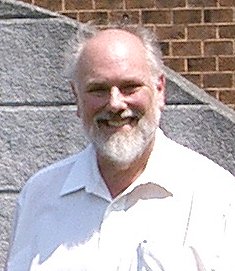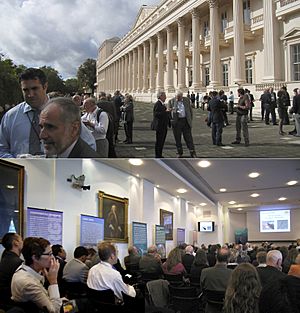J. Frederick Grassle facts for kids
Quick facts for kids
J. Frederick Grassle
|
|
|---|---|

Grassle in 2004
|
|
| Born |
John Frederick Matthews Grassle
July 14, 1939 Cleveland, Ohio, U.S.
|
| Died | July 6, 2018 (aged 78) |
| Alma mater | Yale University Duke University |
| Spouse(s) | Judith Helen (Payne) Grassle |
| Scientific career | |
| Fields | Oceanography, marine biology |
| Institutions | Woods Hole Oceanographic Institution Rutgers University Institute of Marine and Coastal Studies (IMCS) |
John Frederick Matthews Grassle (1939–2018) was an American scientist. People called him Fred. He was a marine biologist and oceanographer. He studied life in the ocean. Fred Grassle was famous for his work on amazing creatures living near deep-sea hydrothermal vents. He also helped create the Census of Marine Life, which counted ocean life. He also started the Ocean Biogeographic Information System (OBIS). This system helps organize all the information about ocean creatures worldwide.
Contents
Early Life and Learning About the Ocean
Fred Grassle was born in Cleveland, Ohio, in 1939. He went to Yale University and studied Zoology. He finished his degree in 1961. During a summer job at the Woods Hole Oceanographic Institution (WHOI), he discovered his passion for the ocean.
He then went to Duke University for his Ph.D. He earned his doctorate in 1967. His research looked at how different environments affect the variety of species. He studied creatures living on the ocean floor. After that, he received a special scholarship. He used it to study animals on the Great Barrier Reef in Australia.
Exploring the Deep Sea and Beyond
In 1969, Fred Grassle joined WHOI as a scientist. He worked on understanding the many different kinds of life in the deep sea. In 1977, he joined a very important trip. This trip explored newly found hydrothermal vents at the Galapagos Rift. These vents are like underwater geysers. They release hot, chemical-rich water.
Fred helped us understand these unique places. Life there gets energy from chemicals, not sunlight. This expedition was even shown in a famous documentary. He worked at WHOI for 20 years. He became a Senior Scientist there.
In 1989, he moved to Rutgers University in New Jersey. He spent the rest of his career there. At Rutgers, he helped start the Institute of Marine and Coastal Sciences (IMCS). He became its first director. His work at Rutgers focused on ocean areas closer to shore. He also helped develop systems to watch the ocean. One of these was the LEO-15 Long-term Ecosystem Observatory. It was an underwater system that could be controlled from Rutgers.
Fred Grassle was best known for his deep-sea research. He used special underwater vehicles called submersibles. These helped him study the ocean floor. He also did experiments in the deep sea. This was new for a field that mostly just described things. He even made the first estimate of how many different species live in the deep sea. This started a big discussion among scientists.
Counting Ocean Life: The Census of Marine Life
In 1996, Fred Grassle had a big idea. He suggested creating a "Census of Marine Life." This project would try to count all the different kinds of life in the ocean. He shared this idea with Jesse H. Ausubel from the Alfred P. Sloan Foundation. In 1997, he hosted a workshop at Rutgers. This meeting helped plan the Census of Marine Life. The project officially started in 2000.
He also thought of a way to share all this ocean data online. This became the Ocean Biogeographic Information System (OBIS). OBIS became the main database for the Census of Marine Life. It is still used today. Fred Grassle led the international committee for the Census of Marine Life from 2000 to 2008. He also directed the OBIS office at Rutgers until 2011.
Fred Grassle retired in 2012. He had worked at Rutgers University for 23 years. He passed away in July 2018, at 78 years old. His wife, Judith Grassle, was also a scientist at Rutgers. After his death, a professor at Rutgers said that Fred had built one of the best marine science programs in the world.
Awards and Achievements
During his career, Fred Grassle wrote over 80 scientific papers. He received many important awards. These included the Grand Prix des Sciences de la Mer Albert 1er de Monaco in 2005. This award recognized his "major contributions to science." He also received the Benjamin Franklin Medal in 2009. In 2011, he got the A.C. Redfield Lifetime Achievement Award. In 2013, he was given the prestigious Japan Prize.
From 1994 to 2002, he was the president of a major oceanography organization. He also helped write a report in 1995 about understanding ocean biodiversity. He was a founding member and first leader of the Census of Marine Life committee. This committee received the International Cosmos Prize in 2011. This was for their ten years of international ocean research. Many different kinds of ocean creatures have been named after him. This shows how important his work was.


